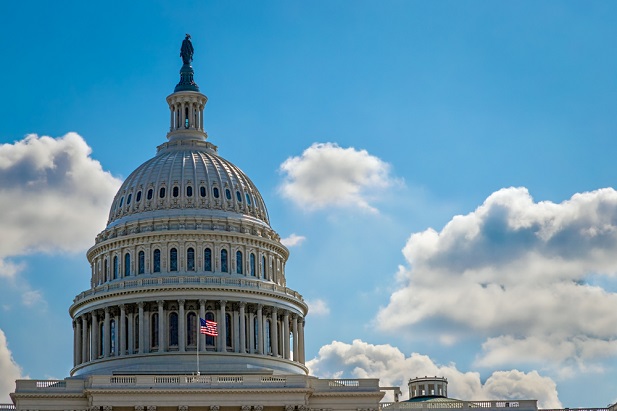 Industryinsights around Open MEPs and retirement legislation, fromMorningstar's Aron Szapiro, Transamerica's Deborah Rubin, andNuveen's Christine Stokes. (Photo: Shutterstock)
Industryinsights around Open MEPs and retirement legislation, fromMorningstar's Aron Szapiro, Transamerica's Deborah Rubin, andNuveen's Christine Stokes. (Photo: Shutterstock)
As the Senate is moving to reconcile two major retirement bills,the prospect of a new Open Multiple Employer Plan definedcontribution market has plan providers positioning to understandthe implications for existing employer sponsors of 401(k) plans and the millions of businessesthat currently do not offer a savings option to workers.
|Open MEPs would expand the existing multiple employer planmarket to allow unaffiliated employers to bundle workers under oneretirement plan.
|Support for the policy is seemingly unanimous among theretirement industry, consumer advocates, and lawmakers—if there areopponents, they are not making themselves heard.
|Businesses with fewer than 100 employees account for more than40 million workers, according to the Small Business Administration.More than half of employers with fewer than 50 workers do not offera retirement savings plan.
|Open MEPs are designed to close that gap by making it easier andcheaper for employers to offer savings plans. But the extent towhich that can happen will depend on regulations that emerge afterCongress passes a bill, which many in industry, if not most, expectto happen this year.
|“How the Labor Department designs the regulations will becritical,” said Aron Szapiro, director of policy research atMorningstar.
|Under the SECURE Act, which passed by a near-unanimous vote outof the House of Representatives, and the Retirement Enhancement andSavings Act, which has bipartisan support in the Senate, providersof Open MEPs would be fiduciaries and have to register with theLabor Department. Individual employers in pooled plans wouldmaintain a fiduciary obligation to monitor providers.
|The bills give Labor broad authority to craft disclosures MEPproviders would give to employers, said Szapiro.
|But other questions are emerging as to whether or not languagein the retirement bills would allow recordkeepers, insurancecompanies, and money managers to sponsor Open MEPs, and whether thoseprospective sponsors would need a new Prohibited TransactionExemption (PTE) under ERISA to build investment menus withproprietary products.
|“A lot will depend on the balance struck in new prohibitedtransaction exemptions to make this market work,” said Szapiro.
|Large service providers are calling for legislation orregulatory guidance that explicitly allows them to sponsor OpenMEPs.
|If that comes, they can also be expected to ask for an exemptionto use proprietary products in order to incentivize theirparticipation in the market.
|Ultimately, Labor's guidance on those issues will shape themarket.
|“Some members of Congress think of Open MEPs as small employersbanding together to seek these plans out,” said Szapiro. “Butthat's not accurate—it will be providers marketing to smallbusinesses.”
|Szapiro does not believe a PTE for proprietary investment fundsis needed for the formation of a robust MEP market.
|“A lot of providers want that exemption, but we don't think themarket will need it,” said Szapiro. “There's no reason to issue anew PTE if it's not needed, and we think there is a decent chance aprovider market will form without one. There is still a businessincentive to enter the market without a PTE for proprietyproducts.”
|Using the 3(38) and 3(16) model
Szapiro envisions regulations that will utilize ERISA's 3(38)provision, which defines a fiduciary investment manager withdiscretion over managing retirement plan assets. Third-partyfiduciaries would be paired with Open MEP sponsors.
|He also sees a role for managed accounts alongside a standardinvestment menu in an Open MEP, to give individual employers inpooled plans the flexibility to offer a savings strategy tailoredto specific demographic subsets in a pooled plan.
|“The simpler the design, the better the system will work,” saidSzapiro. “It has to be made to work at a low cost—even with amanaged account solution.”
|Deborah Rubin, vice president and director of TPA services andspecial markets at Transamerica, oversees a division that alreadyaligns with third parties to bring pooled plans to employers.
|Transamerica has been in the multiple plan market since 2000.Under one program created specifically for unrelated employers,third-party 3(16) administrative fiduciaries are tapped to be thesponsor of MEPs. In that relationship, Transamerica works solely asthe recordkeeper to the plans.
|“There's a whole universe of 3(16) independent fiduciaries thathas sprouted up in the past three to five years,” said Rubin. “The3(16) serves as the sponsor of the MEP, and has fiduciaryresponsibilities including plan compliance, payroll deductions,documentation, and all the requirements of a plan sponsor.”
|The 3(16) sponsors often pair with an outsourced 3(38)investment manager. Transamerica is a proponent of using thethird-party administrator model as sponsors of Open MEPs goingforward.
|“Whether or not the SECURE Act allows recordkeepers to serve assponsors of Open MEPs, that would not disrupt our ability tosupport this market and expand it going forward,” said Rubin. “Atthis time we do not anticipate changing our strategy to leverageexternal partners. But anything can change.”
|Open MEPs' ability to close the retirement plan access gap willdepend on the regulations that emerge from Labor.
|“The devil will be in the details,” added Rubin. “You never knowwhen you see legislation at this early stage how our governmentwill want to implement it. We can only lead people to water–wecan't make them drink. But if we can take away employers' fears,provide them with administrative and fiduciary support, give themliability protections and plans at a competitive cost, we can getmore employers to sponsor plans, and help more Americans on theirroad to retirement.”
|No time like the present
If the SECURE Act or RESA are signed into law, regulators willhave a year to issue the initial tranche of regulations on OpenMEPs.
|Even though there are significant details to iron out, employersmay want to begin educating themselves now.
|“Lean on your advisors and service providers—that's what we'rehere for,” said Christine Stokes, head of DCIO strategy atNuveen.
|Employers that already sponsor a retirement plan will have toweigh the pros and cons to potentially migrating to a pooledplan.
|“The notion of limited fiduciary liability under an Open MEPsounds very appealing,” said Stokes. “But the reality is you arenever off the hook from being a fiduciary if you are an employer.And it may not be easy to separate from a MEP if an employerdetermines it's not longer in the best interests ofparticipants.”
|And the promised cost savings from the scale of pooled plans maynot be available to some existing sponsors of single plans.
|“It's not necessarily the case that if you increase scale youwill lower costs,” noted Stokes. “As you move further up market,those plans already have scale, and the trade offs to joining a MEPmay not benefit an employer.”
|Opting to migrate to an Open MEP could come at the cost ofcontrol over investment offerings and services specific to thesingle-plan market.
|There is also the potential for administrative complexity forplan administrators when pooling assets. Stokes cited the questionof different matching formulas between employers in a pooled planas an example.
|“That may outweigh the benefits of scale,” she said. “It won'tbe as simple as looking at one factor. Employers will have to weighall the costs and benefits to joining a MEP.”
|READ MORE:
|Commonality for MEPs proposed for businesses insame state, municipality
||Complete your profile to continue reading and get FREE access to BenefitsPRO, part of your ALM digital membership.
Your access to unlimited BenefitsPRO content isn’t changing.
Once you are an ALM digital member, you’ll receive:
- Critical BenefitsPRO information including cutting edge post-reform success strategies, access to educational webcasts and videos, resources from industry leaders, and informative Newsletters.
- Exclusive discounts on ALM, BenefitsPRO magazine and BenefitsPRO.com events
- Access to other award-winning ALM websites including ThinkAdvisor.com and Law.com
Already have an account? Sign In
© 2024 ALM Global, LLC, All Rights Reserved. Request academic re-use from www.copyright.com. All other uses, submit a request to [email protected]. For more information visit Asset & Logo Licensing.








